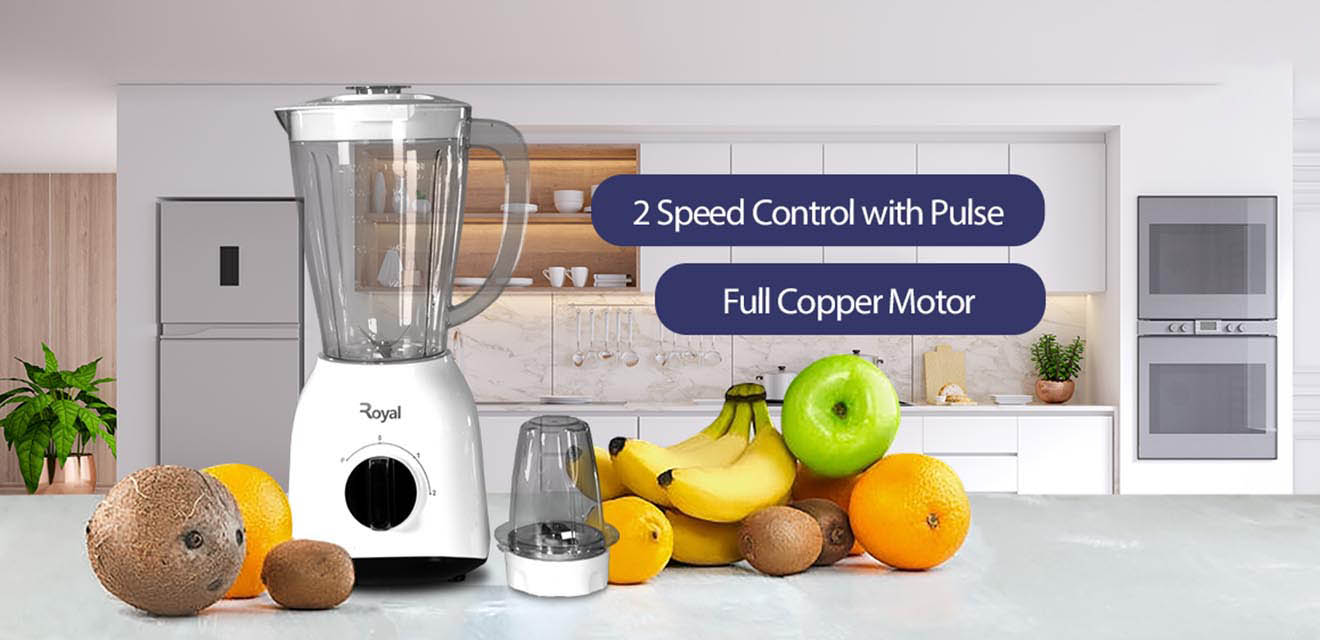No products in the cart.
Blender Buying Guide: Choosing the Best Blender for Your Kitchen Leave a comment
Discover the ultimate blender buying guide. Learn about blender types, key features, and tips to choose the right blender for your kitchen.
A blender is one of those appliances that quickly proves its worth in the kitchen. From making fruit smoothies to grinding pepper or blending soups, it saves both time and effort. With so many models available, choosing the right one can feel overwhelming.
This blender buying guide breaks down the essentials you should know before buying, so you can pick a blender that truly fits your cooking style and household needs.
Blender Buying Guide
1. Types of Blenders
Blenders come in different forms, and knowing the differences helps you pick the one that works best for your kitchen. Countertop blenders are the most common, great for smoothies, soups, and sauces.
Hand blenders (or immersion blenders) are compact and handy for blending directly in pots or bowls. Personal blenders are smaller, built for single servings, and often double as portable bottles. Each type has unique strengths, so the right choice depends on your cooking habits and daily needs.
2. Motor Power and Performance
The strength of a blender’s motor directly impacts how well it handles different ingredients. A motor under 300 watts is best for light tasks like pureeing soft fruits or making shakes. For heavier use, such as crushing ice or grinding nuts, aim for 600 watts and above.
High-performance blenders may even exceed 1000 watts, offering professional-grade results. While more power usually means better performance, it also affects noise levels and energy use, so balance both before deciding.
3. Capacity and Size
Blenders come in different jar sizes, and the right choice depends on your household and cooking habits. A compact 1-litre jar is ideal for single servings or small kitchens, while larger 1.5 to 2-litre jars suit families or anyone preparing multiple portions.
Consider storage as well because larger jars and bases take up more counter space. Choosing the right capacity helps avoid waste, ensures convenience, and keeps the blender practical for daily use without feeling oversized or limiting.
4. Material of Jar and Blades
The durability and performance of a blender largely depend on its jar and blades. Glass jars resist stains and odours but can be heavier and prone to breakage, while plastic jars are lightweight and shatter-resistant but may scratch over time.
Stainless steel jars are strong and ideal for heavy-duty blending but often opaque, making it hard to see contents. For blades, stainless steel is the best choice, ensuring sharpness, rust resistance, and long-lasting efficiency.
5. Speed and Control Settings
Blenders with multiple speed options give you greater control over texture and consistency. Low speeds are ideal for softer foods or gentle mixing, while higher speeds handle tougher ingredients like ice and nuts.
Some models include pulse functions, offering short bursts of power for precise blending. Modern blenders may also come with preset programs for smoothies, soups, or crushing ice, making them easier to use. Choosing the right speed range helps balance convenience with performance.
6. Capacity and Jar Size
Blender jars come in different sizes, and the right choice depends on how you plan to use it. Smaller jars, often between 0.5–1 litre, work well for personal smoothies or single servings. Medium to large jars, ranging from 1.5–2 litres, are better suited for families or meal prepping. Some models even include multiple jars for added convenience. Look for durable materials such as glass or BPA-free plastic, and ensure the jar size matches your daily needs.
7. Blade Design and Material
The blades are the heart of any blender, and their quality directly affects performance. Stainless steel blades are the standard choice because they’re strong, durable, and resistant to rust. Look at the shape too.
Angled or multi-level blades often create smoother blends by pulling ingredients downward. Some blenders include specialized blades for crushing ice or grinding dry foods. A well-built blade system ensures consistent results, whether you’re making soups, sauces, or frozen drinks.
8. Ease of Cleaning
A blender that’s difficult to clean can quickly become frustrating to use. Many models now come with dishwasher-safe jars, lids, and blades, making clean-up simple. Some even feature a self-cleaning mode—just add warm water and a drop of dish soap, then run the blender for a few seconds.
Detachable blades are also helpful for reaching hidden spots. Choosing a blender that’s easy to wash saves time and ensures hygiene after every use.
9. Noise Level and Stability
Blenders can be loud, especially high-powered ones, but some models are made with noise-reduction features. If you often blend early in the morning or late at night, this can make a big difference.
Stability also matters. Get one with rubber feet or a solid base reduce vibration to prevent the blender from moving while in use. A stable and quieter blender offers a smoother experience without disturbing the household.
10. Price and Warranty
Blenders range from budget-friendly models to high-end systems with advanced features. Your choice should balance performance with affordability, depending on how often you blend and the types of tasks you handle.
A warranty is equally important, as it protects your investment and reflects the manufacturer’s confidence in the product. Longer warranties often indicate better durability, giving you peace of mind that your blender will serve you for years.
Find the Right Blender for Your Kitchen
Choosing the right blender depends on your lifestyle, cooking habits, and budget. From powerful countertop models to handy personal blenders, there’s a perfect option for every household. By weighing features, durability, and warranty, you’ll end up with an appliance that makes meal prep easier and more enjoyable.
Ready to Shop?
Explore our wide range of blenders from trusted brands. Visit our online store or stop by any of our SIMS Digital Centres nationwide to pick the blender that fits your needs today.
